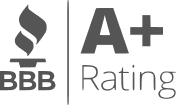The Silent Financial Tool Behind America’s Nonprofits
For decades, nonprofit leaders have quietly endured a financial paradox: they run organizations that provide some of the most essential services in society—housing, hunger relief, education, mental health—but they must do so with some of the most unpredictable cash-flow patterns in the economy. While for-profit companies have long relied on bank lines of credit to navigate uneven revenue cycles, nonprofits were largely left without access to the same financial tools.
That is beginning to change.
Since 2012, Financing Solutions—a private lending company focused exclusively on nonprofit and small-business working-capital financing—has grown into the nation’s largest provider of unsecured lines of credit for small nonprofits. Through its thousands of nonprofit clients and daily conversations with executive directors, the company has learned something important: nonprofits are far more financially disciplined, conservative, and responsible than most banks assume. 
And that insight is reshaping how many nonprofits think about cash management, risk, and sustainability.
Why Cash Flow in Nonprofits Is So Volatile
Nonprofits tend to be exceptional budgeters—often better than for-profits. They know their grants cycles, donor patterns, and expected revenue with near-surgical precision. But what they can’t control is timing.
Delays in grant reimbursements, contracts that pay in arrears, fluctuating donation cycles, and slow government disbursements create cash-flow valleys that can last weeks or months. A 2023 survey from the National Council of Nonprofits found that 68% of nonprofits experience revenue delays from government contracts, and more than half report that these delays “threaten program continuity.”
Source: https://www.councilofnonprofits.org
Meanwhile, expenses—especially payroll—are fixed. Rent is fixed. Utilities are fixed. Insurance premiums march on regardless of whether a state reimbursement arrives late or a federal grant is temporarily frozen due to political gridlock.
In short: nonprofit revenue is variable, but nonprofit expenses are not.
This mismatch is the core reason nonprofits increasingly rely on having a line of credit in place.
Why Banks Rarely Approve Nonprofit Lines of Credit
Despite their social impact, nonprofits face substantial barriers in the traditional banking system.
Commercial banks lend out depositor money, meaning every loan is scrutinized heavily by regulators. Their underwriting models are built for for-profit financial structures—consistent profit margins, collateral, owner guarantees—not for organizations built to spend every dollar toward mission.
The result? Banks routinely decline nonprofits unless they exceed $10–$15 million in revenue—a threshold most organizations will never reach. According to IRS data, 92% of U.S. nonprofits operate under $5 million in annual revenue, placing them outside traditional bank credit criteria.
Source: https://www.irs.gov
Even when a bank does consider a nonprofit, the process is often laden with requirements: personal guarantees, collateral, audited financials, annual renewal fees, and mandatory usage requirements.
That is why many nonprofits have historically relied on short-term loans from nonprofit board members or donors—a practice that introduces both ethical and financial risk.
A Different Approach: Unsecured Nonprofit Lines of Credit
Financing Solutions—and a small handful of similar alternative lenders—take a fundamentally different approach. Their lines of credit:
Require no collateral
Require no personal guarantees (except in cases of fraud)
Have no setup fees
Cost nothing when not in use
Do not require audited financials
Do not require forced draws on the line
This “trust-first” model has been surprisingly successful. Nonprofits, as it turns out, are extraordinarily conservative about drawing money they don’t need. Most use their line only for true financial emergencies—and often repay it within weeks or months.
It’s an old-school relationship-driven approach, where lenders know their clients personally and speak with them frequently. The owners themselves often answer the phone.
The Top Reasons Nonprofits Use Their Line of Credit
After years of reviewing thousands of real-world nonprofit cases, certain consistent patterns emerge. These are the most common uses:
1. Payroll Protection—The #1 Use Case Nationwide
Payroll is the largest expense for most nonprofits, often representing 60–80% of operating costs. Missing payroll—even once—can trigger state penalties, organizational crisis, and staff departures.
Most executive directors say the line of credit serves one essential purpose: protecting their team.
2. Reimbursement-Based Grants
Many state and federal grants require nonprofits to front program expenses and wait—sometimes months—for reimbursement. During government shutdowns or transitions between administrations, delays can be even longer.
A line of credit prevents program shutdowns caused by bureaucratic lag.
3. Delayed Grants and Donations
Grants often arrive later than projected. Donor pledges land after year-end appeals. Even large institutional funders sometimes push disbursements by 30–90 days.
The line of credit smooths the unpredictability.
4. Preventing Program Interruptions
A food pantry cannot stop distribution because a reimbursement is late. A youth shelter cannot shut its doors for a few weeks. Behavioral health programs cannot “pause” therapy sessions.
Consistent delivery is essential—and often life-saving.
5. Strategic Investments and Opportunities
Some nonprofits use a line of credit not for emergencies, but for strategic wins—like hiring a grant-writing consultant whose work may yield significant long-term revenue.
Others use it for short-term buildouts or equipment purchases, knowing funds will be replaced soon.
6. Expansion Expenses
Organizations moving into new buildings or expanding classrooms sometimes use the line to cover upfront costs before pledged funds arrive.
Each use case underscores a simple truth: nonprofits use credit responsibly, predictably, and strategically—not recklessly.
Why It’s Critical to Set Up a Line of Credit Before You Need One
The biggest mistake nonprofits make is waiting too long.
When an organization applies during a crisis—missed payroll, shrinking reserves, a budget deficit—the lender sees a red flag. Approval becomes harder, and underwriting becomes stricter.
The safest time to set up a line of credit is when finances are stable, systems are predictable, and the organization is not under pressure. That’s when the organization looks strongest to lenders—and when the process is fastest.
A line of credit is like insurance: You buy it before the emergency, not during it.
Why Executive Directors Should Avoid Loaning the Organization Money
It may feel noble to personally write a check to cover a shortfall, but doing so invites risk:
Conflict of interest concerns during audits
Potential legal complications if the nonprofit ever dissolves
Damage to the ED’s personal credit
Blurring the line between personal and organizational finances
A line of credit establishes professional boundaries and protects both the ED and the organization.
Lines of Credit vs. Credit Cards
Many nonprofits default to credit cards because they’re familiar. But they come with limitations:
| Credit Cards | Lines of Credit |
|---|---|
| Require personal guarantees | No personal guarantees (except in fraud) |
| High interest rates | Typically far lower |
| Small limits | Much larger limits |
| Impacts personal credit | Builds nonprofit credit |
For nonprofits under $10M, a line of credit is almost always more flexible, safer, and cheaper.
Why Nonprofits Sleep Better with a Cash Backup Plan
One theme emerges again and again from executive directors who secure a line of credit: the relief is palpable.
It reduces stress, protects staff, prevents emergency fundraising, and eliminates uncomfortable donor loans. Boards often approve it unanimously because it strengthens organizational stability.
In a sector where burnout is chronic and financial anxiety is constant, a cash-flow backup plan is no longer a luxury—it’s a necessity.
Choosing a Nonprofit-Friendly Lender
Most commercial banks will decline nonprofit applications outright. So nonprofits typically explore alternative lenders experienced with the sector.
Financing Solutions, for example:
Is A+ rated by the BBB
Holds five-star Google reviews
Has served nonprofits nationwide for more than 12 years
Provides an easy online application
Website: https://financingsolutionsnow.com
Other resources on nonprofit financial management that leaders often find useful include:
Nonprofit Finance Fund: https://nff.org
National Council of Nonprofits: https://www.councilofnonprofits.org/tools-resources
Candid (formerly Guidestar + Foundation Center): https://candid.org
These tools help nonprofits improve financial forecasting, grant management, and budget stability.
A Line of Credit as a Core Financial Strategy
As nonprofit leaders navigate economic uncertainty, shifting political climates, and ongoing funding delays, one principle has become increasingly clear: financial stability requires tools, not hope.
A line of credit isn’t just a bridge between grants—it’s a safeguard for the mission, the staff, and the community. It ensures that when the world becomes unpredictable, nonprofit services do not.
In the for-profit world, a line of credit is considered standard business infrastructure. It’s time nonprofits embraced the same protection.




